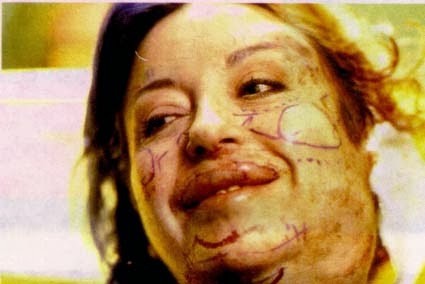 |
| <Figure 1> |
It never dawned on me how important art was for science
until I thought about medicine. Medicine is a very visual discipline. It
involves a connection and interaction with the human body that many times needs
a visual aid. One of the most helpful visual aids medicine has is art.
Earlier this year, Naomi Slipp, a Boston University, History
of Art and Architecture graduate student designed an exhibit that displayed the
human body as an intersection of art. Her showcase, Teaching the Body, gave visitors a history of anatomy in America (Thibeau).
.jpg) |
| <Figure 2> |
Slipp worked to gather various art pieces including Cast of the Hand of Harvey Cushing (1992)
and Angelico (2012). The pieces Slipp
collected for her showcase were not just important pieces of art, they were
also integral to the advancement of medicine. As anatomy evolved and as
different images of the body were used to represent complex ideas, not directly
related to medicine, the human body morphed itself into a canvas. A canvas that
is on one side examined by the doctor and on the other used by the artist.
One of the most influential artists this week that put into
perspective the true relationship between medicine and art was Orlan. Her Carnal Art (2001) documentary was
powerful because her body was her art piece.
 |
| <Figure 3> |
This week’s material was very interesting yet at times
challenging because of the extremes some artists would take in order to convey
a message. Orlan’s documentary was especially difficult to watch because of how
vulnerable she was at times. Her dedication and her determination to allow
doctors to cut into her skin and to alter her body for art was ironic. This was
ironic because medicine calls for people to do the very same thing and one
could have assumed Orlan was giving her body for science.
The most important idea I took about art and medicine this
week is that the boundaries for anatomy and art are blurred and medicine and
art are always intertwined.
Figures
<Figure 1> Cast
of the Hand of Harvey Cushing. 1992. Photograph. n.p. Web. 27 Oct 2013.
<https://www.countway.harvard.edu/chm/rarebooks/exhibits/gilt/>.
<Figure 2> Nilsson,
Lisa. Angelico. 2012. Painting. The LancetWeb. 27 Oct 2013.
<http://www.thelancet.com/journals/lancet/article/PIIS0140673613602664/images?imageId=fx1§ionType=lightBlue&hasDownloadImagesLink=false>.
<Figure 3> Sichov,
Vladimir. Orlan. Photograph. www.stanford.edu.
Web. 27 Oct 2013. <http://www.stanford.edu/class/history34q/readings/Orlan/Orlan4.jpeg>.
Sources
Liao, Joshua.
"The human body at the intersection of art and science." Lancet. 381.9866 (2013): 525. Web. 27 Oct. 2013.
<http://www.thelancet.com/journals/lancet/article/PIIS0140-6736(13)60266-4/fulltext>.
Oriach, Stephan,
dir. Orlan,
carnal art. 2001. Film. 27
Oct 2013. <http://www.youtube.com/watch?v=no_66MGu0Oo>.
Thibeau, Erin.
N.p.. Web. 27 Oct 2013. <http://www.bu.edu/today/2013/teaching-the-body/>.
I agree it was hard for me to watch Orlan's documentary as well, I also never noticed the irony between Orlan wanting to alter her body for art but I completely agree with that!
ReplyDeleteThis comment has been removed by the author.
ReplyDeleteAlthough the idea seems obvious after you pointed out, it never occurred to me before I read your blog that art and medicine connect to each other in that they both need visual representation. I think it is because this connection that so many great artists are also outstanding anatomists and nowadays, as you said, we can represent our body in more ways through art creation because the technology of medicine is evolving.
ReplyDeleteAlso, I agree with you in that the materials of this week are a little bit challenging. They reveal the duality of art and science in our body. Sometimes it is hard for us to tell where one ends and the other starts. The way you interpret Orlan's controvertible work really shows this duality and changed my view of Orlan. At first, I was really shocked by her and too scared to continue watching the video. However, now, when viewing her work as a dedication rather than a pure art creation, I felt a lot more comfortable and can start to understand some of her ideas.